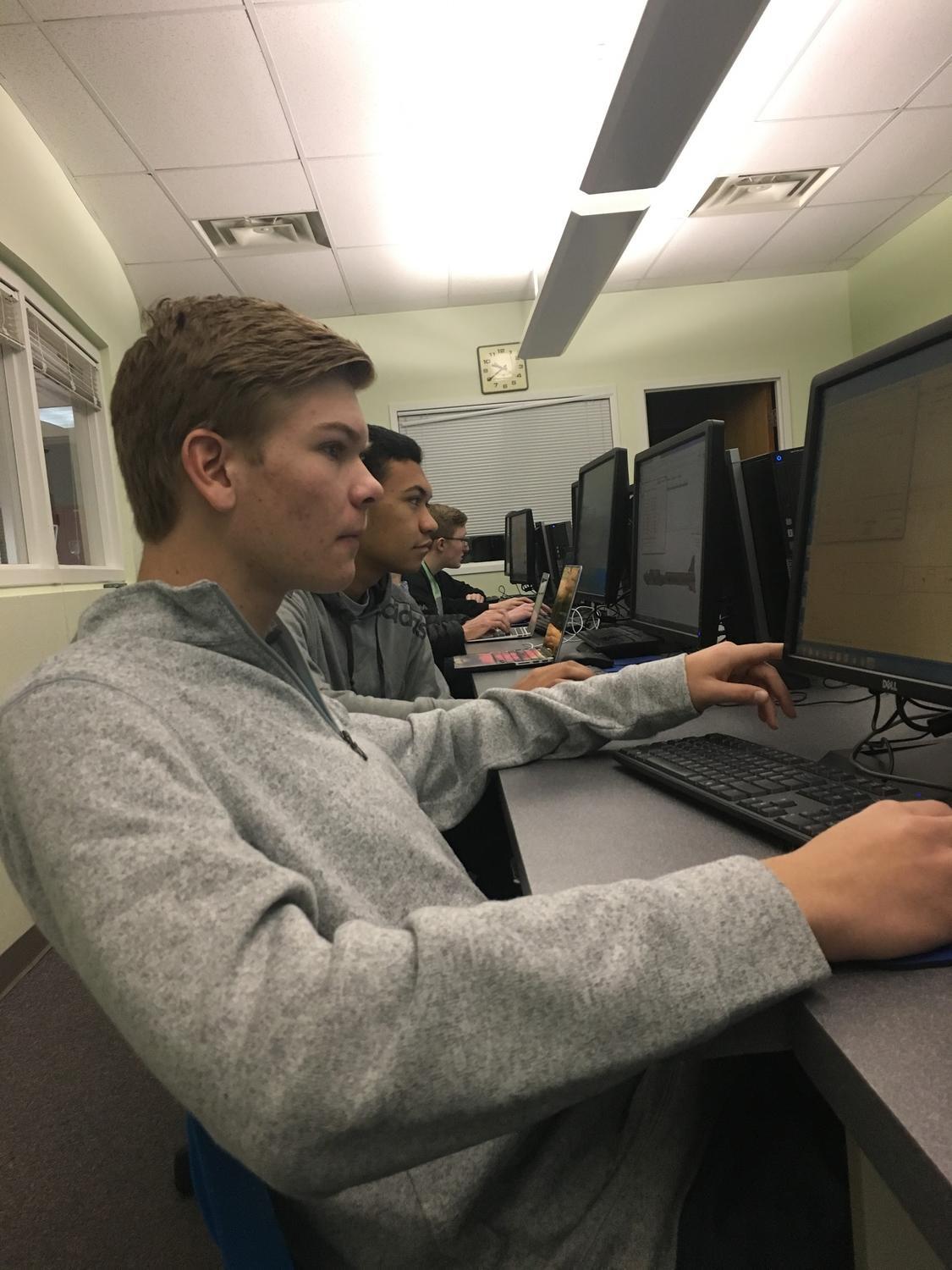 The Space Exploration ECS been introduced to OpenRocket - a model rocket simulator that allows you to design and simulate your rockets electronically before actually building and flying them. During the process, we learned about the individual parts of a rocket. A rocket consists of, from top to bottom, a nose cone with a spiked head to prevent air resistance; the body tube, with a parachute inside for safe landing; the fins, which are trapezoid or triangle-shaped (a rocket usually contains 3 or 4 fins to maintain balance); and the motor, which is the main ignition force to launch the rocket. We then ran a simulation, in which by inputting information about the outside weather, air pressure, angle of launch, and the size of our rocket components, the computer was able to compute the time, maximum height (also known as apogee), and the average velocity of the launch. After the simulation practice, we were divided into groups to start on our first major project: to build actual rockets in accordance to the rules of the Team America Rocketry Challenge (TARC). However, we could choose to adjust some of the competition criteria. All of our rocket teams chose to commit to designing a rocket capable of carrying and securing an egg such that it won’t break prior to landing (known as rocket touchdown).
The Space Exploration ECS been introduced to OpenRocket - a model rocket simulator that allows you to design and simulate your rockets electronically before actually building and flying them. During the process, we learned about the individual parts of a rocket. A rocket consists of, from top to bottom, a nose cone with a spiked head to prevent air resistance; the body tube, with a parachute inside for safe landing; the fins, which are trapezoid or triangle-shaped (a rocket usually contains 3 or 4 fins to maintain balance); and the motor, which is the main ignition force to launch the rocket. We then ran a simulation, in which by inputting information about the outside weather, air pressure, angle of launch, and the size of our rocket components, the computer was able to compute the time, maximum height (also known as apogee), and the average velocity of the launch. After the simulation practice, we were divided into groups to start on our first major project: to build actual rockets in accordance to the rules of the Team America Rocketry Challenge (TARC). However, we could choose to adjust some of the competition criteria. All of our rocket teams chose to commit to designing a rocket capable of carrying and securing an egg such that it won’t break prior to landing (known as rocket touchdown).
In the afternoon, we switched our focus from the first major goal of the ECS to the second: designing a payload to be carried by a high altitude balloon (HAB) up to “near space”, the region of Earth’s atmosphere that lies between 20 and 100 km above sea level. To learn the flight dynamics associated with HAB, we invited Michael Penn from Colorado College to talk about the force of buoyancy and how its effect on the flight path of a balloon. We were then challenged to explain a strange phenomenon that we observed in a video: a balloon was tied inside a car that sat at rest; when the car accelerated the balloon moved forward and when the car stopped the balloon moved backwards. This motion is the opposite of what happens to denser objects. We deduced that when the car moved forward, the air in the car moved backward, thus creating an “air zone” in the back that was more dense than that in the front of the car. This resulted in a larger force of buoyancy pushing on the balloon from behind, thus pushing the balloon forward. We were all in awe after the explanation, and amazed by how immensely varied physics can be.
 Afterwards, we contacted Mr. Max Fagin ‘06, a CSS alumnus and now a HAB specialist, about considerations for designing our own HAB payloads. The Skype visit was mostly a Q&A session. We learned that our individual payloads cannot be heavier than 1.09 kg. Mr. Fagin also talked to us about science experiments that could be tested in the payloads, such as measuring humidity and air pressure, and methods for capturing imagery from a camera affixed to the payload. After the talk, everyone was enthusiastic about how to construct payloads and we look forward to sharing our preliminary designs with Mr. Fagin for feedback.
Afterwards, we contacted Mr. Max Fagin ‘06, a CSS alumnus and now a HAB specialist, about considerations for designing our own HAB payloads. The Skype visit was mostly a Q&A session. We learned that our individual payloads cannot be heavier than 1.09 kg. Mr. Fagin also talked to us about science experiments that could be tested in the payloads, such as measuring humidity and air pressure, and methods for capturing imagery from a camera affixed to the payload. After the talk, everyone was enthusiastic about how to construct payloads and we look forward to sharing our preliminary designs with Mr. Fagin for feedback.
It was a full day but everyone left school excited about all that was learned and brainstormed.
Follow all the student ECS Blogs on Campus News!




